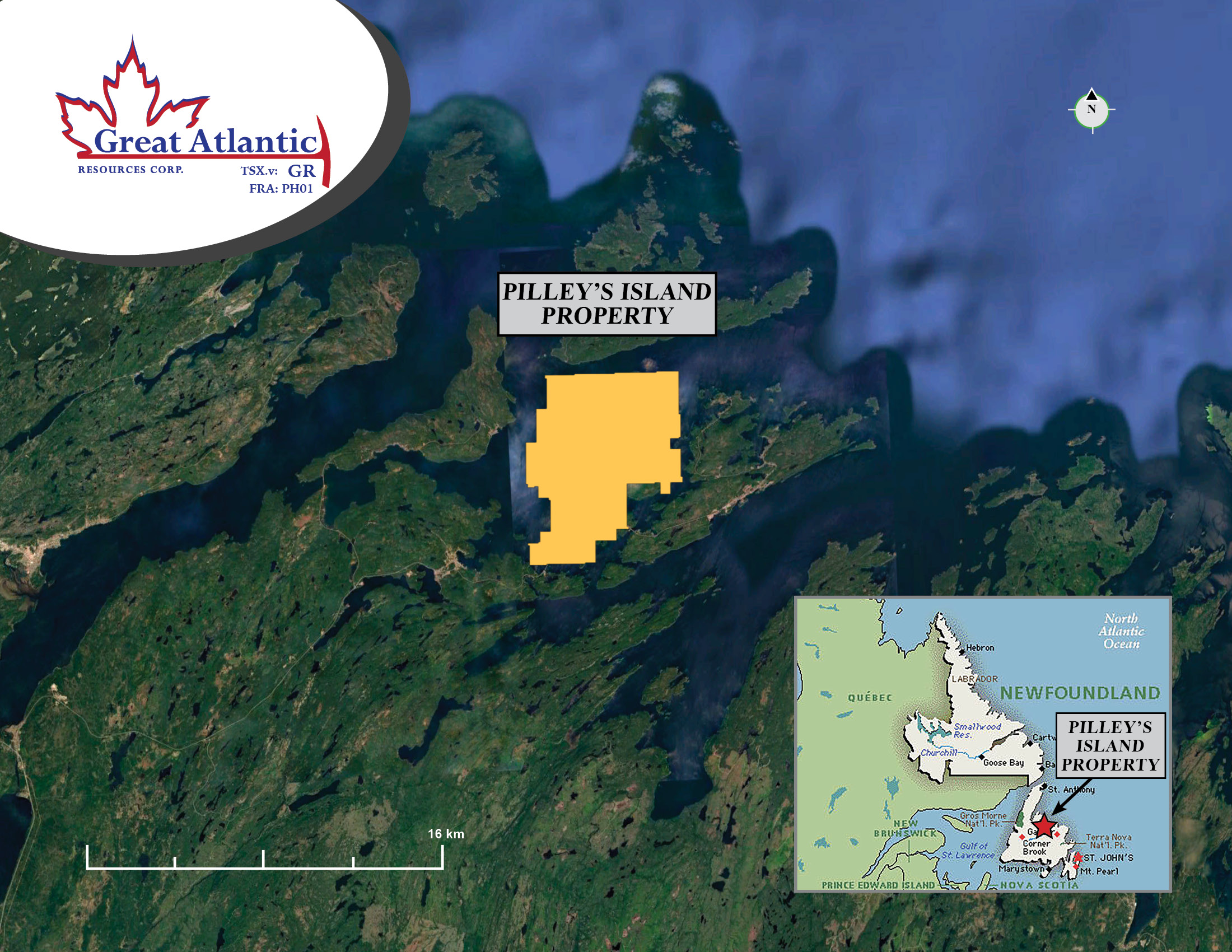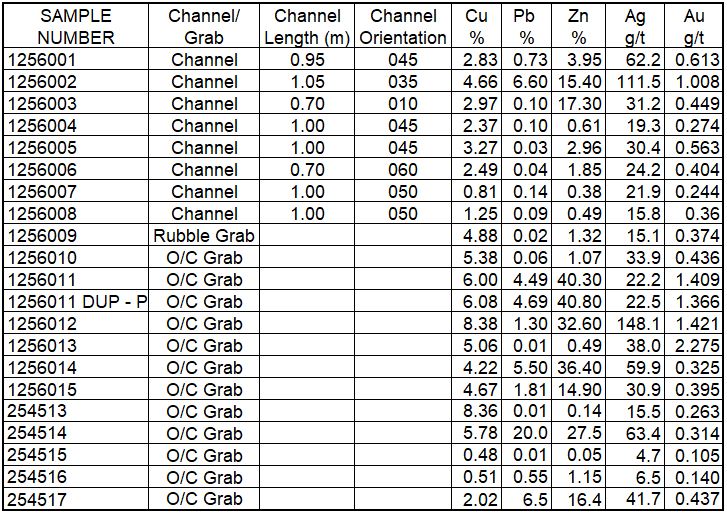
The Pilley's Island property consists of 10 adjoining licences covering a total area of 4,600 hectares. The property covers over 95% Pilley’s Island. Access to the property is excellent with paved roads transecting the property.
The property hosts the historic Pilley’s Island Mine, which operated during the 1890s and early 1900s. The Newfoundland and Labrador Department of Natural Resources reports historic estimated proven reserves of 1.159 million tonnes grading 1.23% Cu (referencing Grimley, 1968 as the source) or 627,373 tons at 2.34% Cu (referencing Walker, 1976 as the source) in their Mineral Occurrence Database. A qualified person has not done sufficient work to classify the historical estimates as current resources or current reserves.
Great Atlantic’s focus has been the precious metal - base metal Bull Road showing, located in the south region of the property. Diamond drilling is planned in 2018 at this showing. A trench excavated in 2017 at this showing exposed sulfide mineralization over a northwest-southeast length of 130m with a width varying between 1-7m. The Bull Road Showing is a polylithic slump breccia of volcanogenic massive sulphide mineralization containing massive sulphide clasts up to greater than a metre in length. The best channel sample from the trench was 15.4% Zn, 6.6% Pb, 4.66% Cu, 111.5 g/t Ag and 1.0 g/t Au over a 1.05m length. The channels samples were collected across selected clasts at generally right angles to the long dimension of the clasts. Bedrock grab samples from the trench returned up to 40.8% Zn, 20.0% Pb, 8.38% Cu, 148.1 g/t Ag and 2.2 g/t Au. Qualified persons verified this trench data. Qualified persons supervised sampling and verified sample data. The samples
(and lab-inserted blank, standard and duplicate samples) were analyzed at Eastern Analytical (independent of Great Atlantic) in Springdale
Newfoundland (gold by Fire Assay – atomic absorption (AA); and copper, lead, zinc and silver by multi-acid digestion and AA and / or ICP-OES).


The Pilley’s Island Property hosts the historic Pilley’s Island Mine, which operated during the 1890s and
early 1900s. The Newfoundland and Labrador Department of Natural Resources reports historic
estimated proven reserves of 1.159 million tonnes grading 1.23% Cu (referencing Grimley, 1968 as the
source) or 627,373 tons at 2.34% Cu (referencing Walker, 1976 as the source ) in their Mineral
Occurrence Database. David Martin, VP Exploration for Great Atlantic, states “These historical estimates
of reserves are not reliable. The historical estimates are only relevant to the extent of identifying an area
on the property for research and possible future exploration. The key assumptions, parameters, and
methods used to prepare the historical estimates are not known. A qualified person has not done
sufficient work to classify the historical estimates as current resources or current reserves. A qualified
person would need to complete sufficient work following CIM Best Practice Guidelines to upgrade or
verify the historical estimates as current mineral resources or mineral reserves. This would almost
certainly require additional exploration in the way of diamond drilling, trenching and / or underground
work and corresponding sampling all of which must follow CIM Exploration Best Practice Guidelines.”
Great Atlantic is not treating the historical estimates for the historic Pilley’s Island Mine as current
mineral resources or mineral reserves. Great Atlantic's focus since acquiring the property in 2017 has been the Bull Road showing. Great Atlantic has not conducted work at the historic Pilley's Island Mine.

